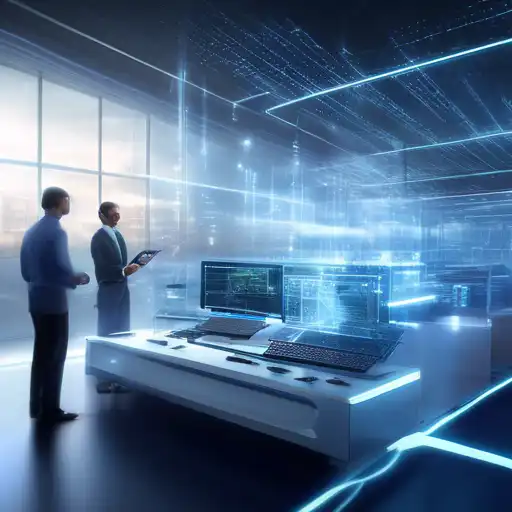Introduction to Edge Computing
In the digital age, speed and efficiency are paramount. Edge computing emerges as a transformative technology, bringing data processing closer to the source of data generation. This paradigm shift not only enhances speed but also reduces latency, making it a cornerstone for the future of Internet of Things (IoT) and real-time applications.
What is Edge Computing?
Edge computing refers to the practice of processing data near the edge of your network, where the data is being generated, rather than in a centralized data-processing warehouse. This approach minimizes the distance data must travel, thereby reducing latency and bandwidth use.
Benefits of Edge Computing
- Reduced Latency: By processing data closer to its source, edge computing significantly decreases the time it takes for data to be processed and acted upon.
- Bandwidth Savings: Local processing reduces the amount of data that needs to be sent to the cloud, saving bandwidth.
- Improved Security: Distributing processing can enhance security by limiting the exposure of sensitive data.
- Scalability: Edge computing allows for more scalable solutions, as it can handle the increasing amount of data generated by IoT devices.
Edge Computing vs. Cloud Computing
While cloud computing has been the backbone of data storage and processing, edge computing offers a complementary approach. Unlike cloud computing, which relies on centralized data centers, edge computing decentralizes processing power to handle data more efficiently at or near the source.
Applications of Edge Computing
Edge computing is revolutionizing various industries by enabling faster and more efficient data processing. Some notable applications include:
- Autonomous Vehicles: Real-time data processing is critical for the safety and efficiency of self-driving cars.
- Smart Cities: Edge computing facilitates the management of traffic lights, surveillance, and other urban infrastructure in real-time.
- Healthcare: Wearable devices and remote monitoring systems benefit from the immediate processing of health data.
- Retail: Personalized shopping experiences are enhanced through real-time analytics and inventory management.
Challenges and Considerations
Despite its advantages, edge computing presents challenges such as the need for robust infrastructure, security concerns, and the complexity of managing distributed systems. However, with continuous advancements in technology, these challenges are being addressed to unlock the full potential of edge computing.
Future of Edge Computing
The future of edge computing is bright, with its integration with 5G technology and AI expected to drive further innovations. As businesses and technologies evolve, edge computing will play a pivotal role in enabling faster, more efficient, and secure data processing solutions.
Edge computing is not just a trend but a fundamental shift in how we process and manage data. By bringing computation closer to the data source, it offers unparalleled speed and efficiency, paving the way for a new era of technological advancements.
